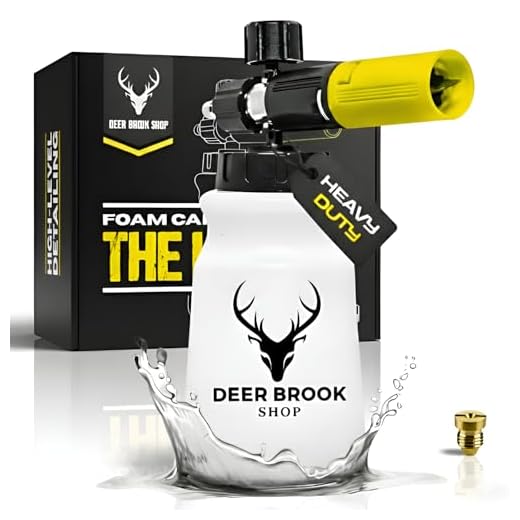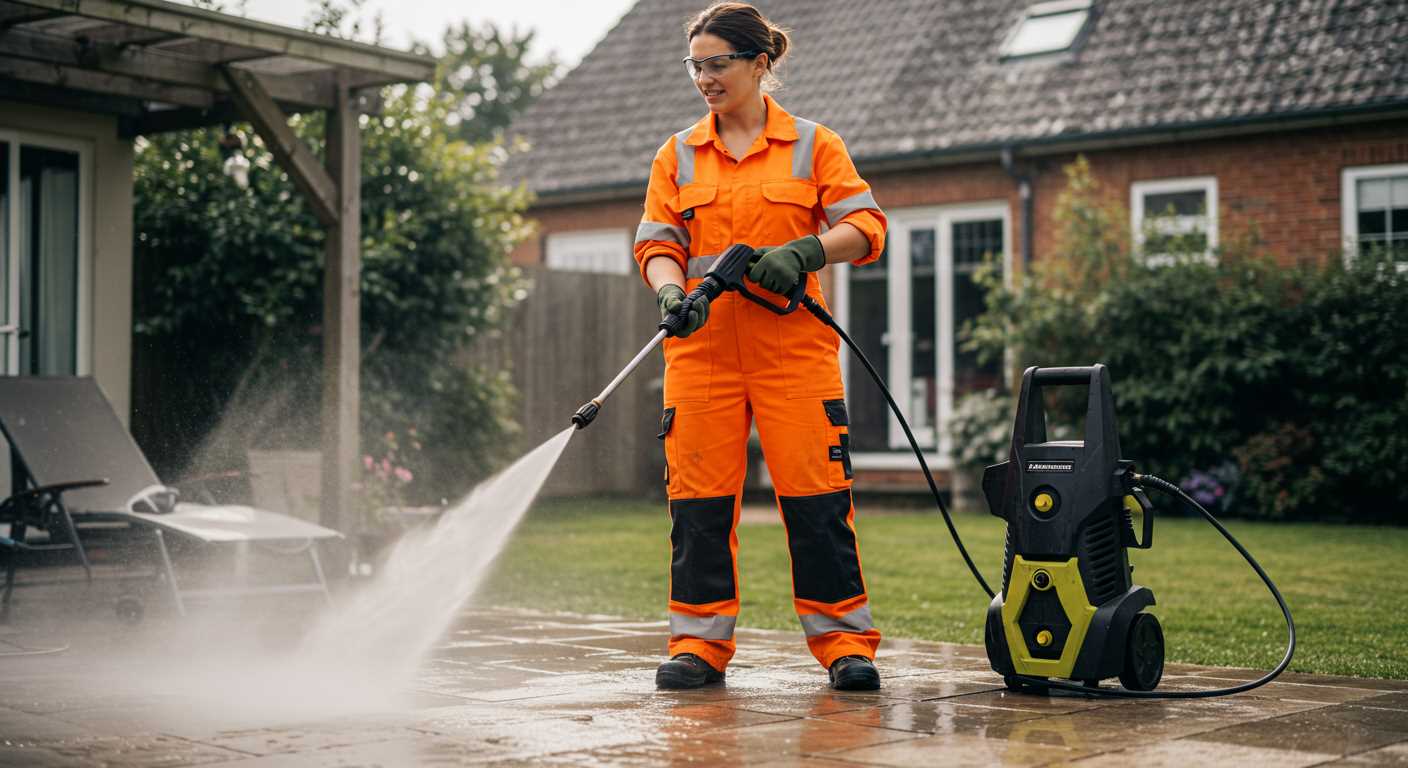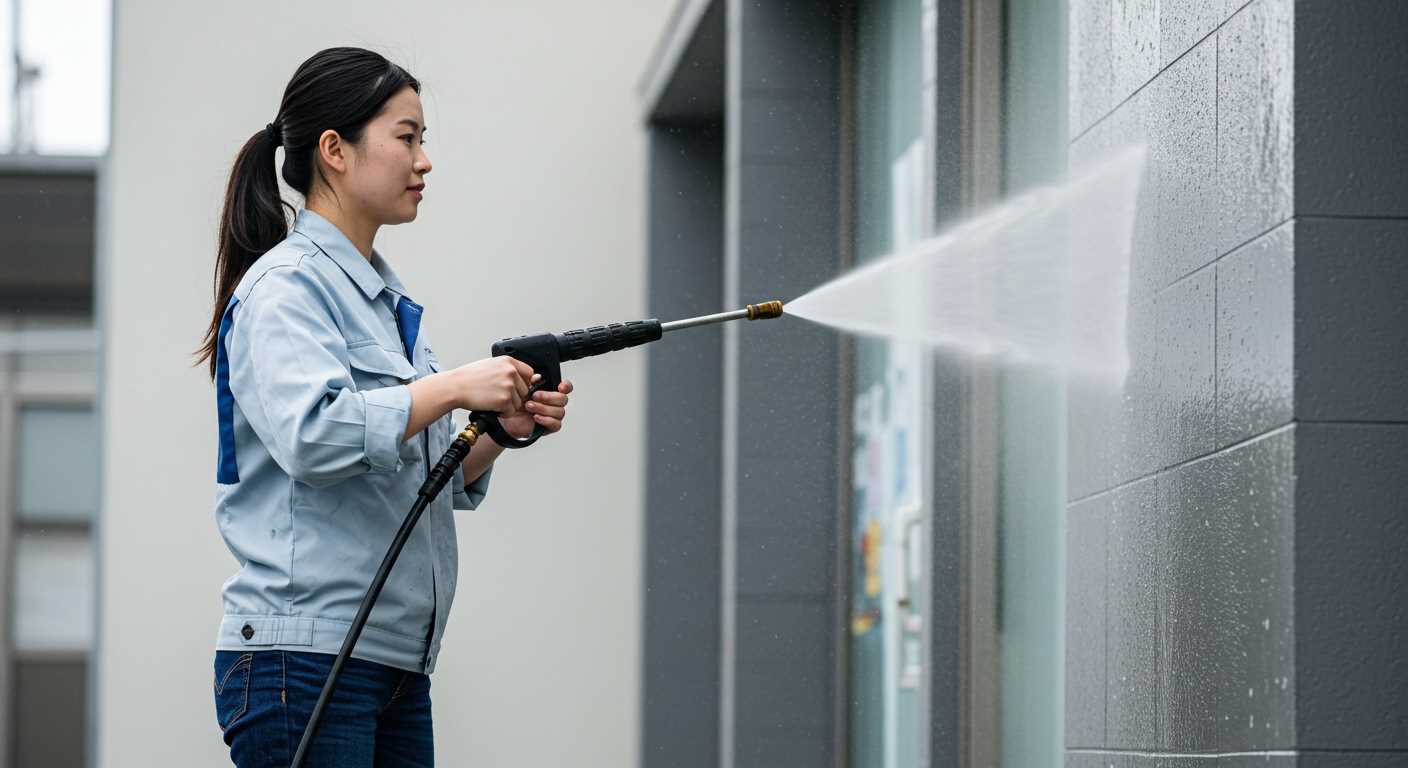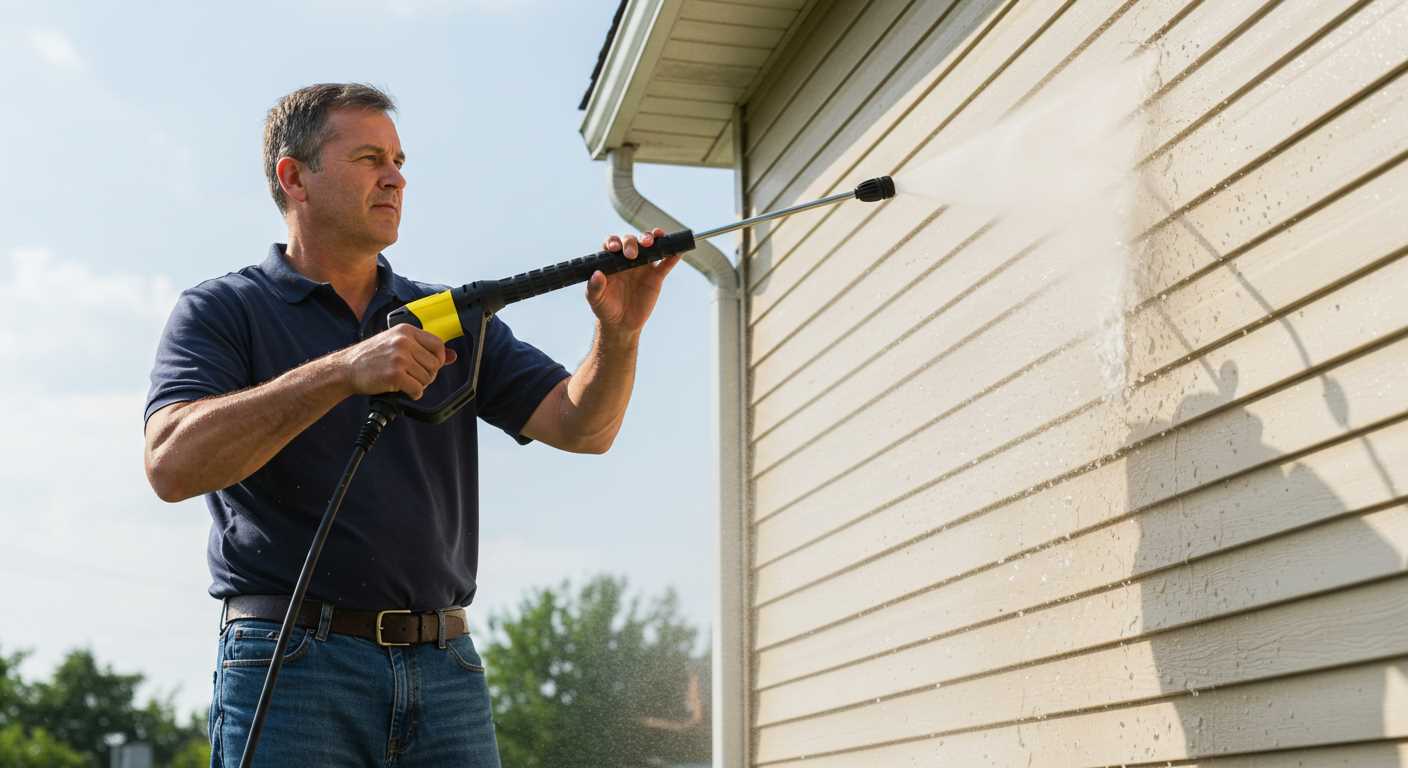



Choosing the right machine for applying foam to vehicles requires focus on specific features. A high-pressure cleaner equipped with at least 100 bar (1450 psi) can effectively create the necessary foam. Machines with adjustable pressure settings can enhance the foam application process, allowing for flexibility based on the dirt type and vehicle surface.
In my experience, certain models are more compatible with foam cannons, which are essential for achieving the desired foaming effect. Ensure the cleaner has a compatible quick connect fitting, as this simplifies the attachment of foam lances. This small but significant detail can prevent frustrating compatibility issues and save time during the washing process.
Brands offering dedicated foam cannon kits may provide optimal performance, especially when paired with a suitable cleaner. I have found that electric units typically produce a steadier flow, ideal for foam application, while petrol-driven models can vary widely in performance. A nozzle tip with a wider spray pattern can also assist in spreading the foam evenly over the vehicle surface.
Attention to the detergent being used is equally critical, as not all cleaning agents produce foam effectively. A pH-neutral snow foam formulation is recommended to protect the vehicle’s finish while ensuring efficient dirt removal. Selecting the right combination of equipment and cleaning solution will lead to a superior wash experience, ensuring that your vehicle looks pristine after every wash.
Understanding the requirements for snow foam application

A minimum pressure rating of 110 bar is necessary for optimal application of foam. This level ensures that the foam will properly cling to surfaces, allowing for effective cleaning. Higher pressures, around 150 bar, provide an even better experience, creating a denser foam that helps tackle tougher dirt and grime.
The flow rate also plays a significant role. A minimum of 400 litres per hour is ideal. This metric ensures that there’s enough water to mix with the foam solution and distribute it evenly across the vehicle’s surface. Insufficient flow can lead to inadequate foam coverage and reduced cleaning performance.
An adjustable nozzle is desirable. This feature allows for a variety of spray patterns, from wide coverage to pinpoint accuracy. Having the option to fine-tune the spray enhances the overall cleaning process, especially when addressing specific areas of concern.
Compatibility with foam cannons or lances is crucial. Ensure that the model chosen can accommodate a foam attachment without any issues. Many modern cleaning units include specific adaptors, which simplify the connection process and enhance versatility.
It’s wise to check the detergent usage. Some machines may have restrictions on the foam products that can be employed safely. Following the manufacturer’s recommendations for foaming agents will prevent potential damage and ensure maximum cleaning efficiency.
Regular maintenance of the cleaning unit is key. Clean filters and check seals to ensure that everything is functioning as intended. Neglecting upkeep could lead to decreased performance, hindering the application of foam.
Lastly, it’s beneficial to invest in a unit that offers a warranty and reliable customer support. This added assurance ensures that any potential issues can be resolved quickly and efficiently, maintaining a high standard of cleaning capability.
Identifying compatible pressure washer types for snow foam
A minimum pressure rating of 100 bar (1450 psi) is necessary for effective foam generation. Models with adjustable pressure settings offer more versatility, allowing fine-tuning to optimise foam application. Look for those equipped with a spray lance specifically designed for snow foaming, which enhances foam thickness and coverage.
Electric models typically provide the lower power required for residential use. They are quieter and more energy-efficient, making them suitable for light to moderate tasks. However, I find that petrol-powered variants usually deliver higher pressures, making them ideal for heavy-duty cleaning but may not be necessary for basic snow foam applications.
Check compatibility with foam cannon attachments. Most modern units feature quick-connect fittings, simplifying the switch between standard nozzles and foam cannon setups. A good foam cannon will disperse detergent evenly, generating thick foam that clings effectively to surfaces.
Also consider flow rate. A minimum of 400 litres per hour will ensure original foam remains effective in lubricating and loosening dirt. Always consult the manufacturer’s specifications to ensure the chosen unit meets these requirements, as compatibility is key for achieving optimal results.
Evaluating Pressure Washer PSI and GPM for Optimal Foam

To achieve the best results when applying foam, a minimum pressure of 1200 PSI is recommended. Anything below this threshold may not adequately atomise the foam solution, leading to subpar coverage on surfaces. A range of 1200 to 2000 PSI is ideal, allowing for effective cleaning without risking damage to delicate finishes.
Gallons per Minute (GPM) also plays a critical role. An optimal range of 1.4 to 2.5 GPM can significantly enhance the foaming process. Higher GPM levels contribute to better dilution and distribution of the foam, enhancing the cleaning action. Units with lower GPM may struggle to create enough foam or leave it patchy during application.
When selecting equipment, consider the temperature of the water as well. Warm water can increase soap effectiveness, resulting in a richer foam. Ideally, using heated water through a compatible machine allows for improved cleaning results. Always verify manufacturer specifications to ensure equipment suitability when mixing foam solutions. Combining the right PSI and GPM along with appropriate water temperature creates the perfect conditions for generating a thick, clingy foam that adheres well to surfaces.
Impact of nozzle size and type on snow foam performance
Choosing the right nozzle size and type significantly influences the effectiveness of the foam produced during the cleaning process. A fan spray nozzle, generally with a wider aperture, lathers foam more evenly and covers larger areas due to its spray pattern. For those looking to maximise foam coverage, a nozzle with a larger orifice is advisable. This allows the foam to be dispersed more efficiently, ensuring a thicker and more consistent application on the surface.
Nozzle Types and Their Effects
Two common types of nozzles used in conjunction with foam applicators are adjustable and fixed nozzles. Adjustable nozzles offer versatility, allowing the user to control the spray angle from narrow to wide. This adaptability can be beneficial in tailoring foam application to different surfaces and types of grime. On the other hand, fixed nozzles, often designed specifically for foam, can optimise the foam generation for thicker, longer-lasting applications.
Understanding Nozzle Size
Nozzle size also plays a crucial role. A smaller nozzle diameter may produce finer foam, improving adhesion to the surface. However, this might also limit the foam’s coverage area, requiring more time and effort. A balance between nozzle size and foam density is necessary–larger nozzles produce thicker foam, while smaller ones can provide more targeted application. Experimenting with various sizes will help determine what works best for specific tasks.
Ultimately, the right combination of nozzle size and type ensures optimal foam performance, enhancing the overall cleaning experience and efficiency. Making these informed choices based on the equipment used will lead to superior results in any cleaning session.
Snow Foam Lance Compatibility with Various Pressure Washers
Compatibility between foam lances and cleaning units largely hinges on the connection types and required specifications of both components. It is essential to check the fittings; most lances operate with M22, 1/4″ quick connect, or other specific adaptors to match the outlet of the apparatus. Adapters are often available to bridge mismatches.
Common Connection Types
In my experience, the M22 thread is prevalent among many brands, whereas some models use a quick connect system for ease of switch between accessories. If a lance doesn’t fit directly, purchasing the right adaptor resolves the issue without compromising performance.
Specifications and Performance

Performances hinge on two primary metrics: pressure ratings and flow rates. Many foam lances require a minimum PSI (around 1000) to function effectively. A flow rate of at least 1.4 GPM often serves to generate a rich foam consistency. If a cleaning unit operates below these ratings, the foam may not adhere properly to surfaces.
Testing various lances with different units highlights that while some lower-powered models can deliver satisfactory results, higher specifications consistently produce superior foam quality, which contributes to achieving an even coating.
Selecting the right lance is critical for optimal foaming. Pay attention to the nozzle size, as it influences the foam’s density and coverage. A wider nozzle will disperse the foam rapidly, while a narrower one provides a controlled spray for intricate detailing.
Adapting pressure settings for different foam formulations
Adjusting pressure settings tailored to specific foam formulas is vital for achieving optimal results. The viscosity and density of various foam products influence how effectively they cling to surfaces. Generally, lighter foams thrive at lower pressures, while thicker formulations may require more robust settings.
For instance, a typical snow foam blend may demand around 800-1200 PSI. This range ensures adequate coverage without merely rinsing away the product. By contrast, ultra-thick formulations could benefit from pressures exceeding 1500 PSI. Here’s a detailed breakdown of common foam types and their ideal pressure settings:
| Foam Type | Recommended Pressure (PSI) | Remarks |
|---|---|---|
| Light Snow Foam | 800-1200 | Best for delicate surfaces and maintenance washes. |
| Standard Snow Foam | 1200-1500 | Versatile for most applications; ensures thorough cleaning. |
| Thick Foam | 1500+ | Optimal for heavily soiled vehicles; needs higher pressure to atomise properly. |
Furthermore, it’s crucial to consider the surface being cleaned. For softer materials, reducing pressure enhances safety while maintaining foam effectiveness. Similarly, maintaining an optimal distance between the nozzle and the surface aids in creating a stable foam blanket, regardless of pressure adjustments.
Ultimately, closely observing the foam’s behaviour during application allows for fine-tuning pressure settings. Adjustments enhance both performance and efficiency, leading to superior cleaning outcomes.
Common misconceptions about snow foam and pressure washers
Many believe that any cleaning device should deliver satisfactory results with foam application. This notion is misleading, as compatibility varies significantly among models.
- High foam quality is guaranteed with any unit: This is incorrect. Not every machine is designed to produce dense foam. Devices with low PSI and GPM often struggle to generate the necessary pressure for effective foam.
- Foam lance compatibility isn’t an issue: A misconception exists that all foam lances can attach to all devices. In reality, lances feature different fittings, and mismatched connections can hinder foam performance.
- Thicker foam means better cleaning: While thick foam provides better dwell time, it does not automatically imply superior cleaning. The formulation of the foam and the quality of the rinse matter equally.
- Hot water is essential: Many assume that hot water boosts foam production. However, cold water can also suffice if the foam formula is appropriately balanced for optimal performance.
- More detergent equals more foam: Excessive use of cleaning agents can lead to dilution issues, reducing the foam’s effectiveness rather than enhancing it. The ratio specified by the manufacturer should be adhered to for best results.
Understanding these misconceptions ensures better preparation and maximises the potential of your cleaning apparatus for foam application.
FAQ:
Can I use any pressure washer for snow foam applications?
Not all pressure washers are suitable for snow foam applications. It’s important to check the specifications of your pressure washer to ensure it can generate the required pressure and flow rate for snow foam. Generally, models with at least 100 bar (1450 psi) and a flow rate of 6-8 litres per minute are recommended for effective snow foam usage. Additionally, make sure your pressure washer has a suitable foam cannon attachment to create the desired foam consistency.
What features should I look for in a pressure washer for snow foam?
When selecting a pressure washer for snow foam, look for one that provides adequate pressure and flow rate. Most foam cannon products work best with a minimum pressure of 100-130 bar (1450-1900 psi) and a good flow rate (ideally around 6-8 litres per minute). It’s also beneficial if the pressure washer has adjustable settings for both pressure and flow, allowing you to control the amount of foam produced. Additionally, compatibility with foam cannon attachments is crucial — ensure your model can attach to one securely.
Can a domestic pressure washer handle snow foam cleaning?
Yes, many domestic pressure washers can handle snow foam cleaning, provided they meet the necessary specifications. Look for models with a minimum pressure of 100 bar (1450 psi) and a sufficient flow rate. Additionally, the presence of adjustable settings for pressure and a compatible foam cannon is beneficial. While some lower-end models may lack power, mid-range to higher-end domestic machines typically perform well for this cleaning method.
What type of foam cannon is best for use with a pressure washer?
The best type of foam cannon for use with a pressure washer is one that is specifically designed to fit your model and is adjustable to create various foam thicknesses. Look for a cannon made from durable materials, and ensure it has interchangeable nozzles for varying degrees of foaming. Some popular options include adjustable foam cannons that allow you to control the pressure and foam density, making it easier to use depending on the task at hand.
Is professional-grade pressure washer necessary for snow foam?
While a professional-grade pressure washer can certainly provide superior cleaning results, it is not strictly necessary for snow foam applications. Many consumer-grade models perform adequately for home use, provided they meet the minimum pressure and flow requirements. If you’re planning frequent, heavy-duty cleaning, investing in a higher-end model may be beneficial, but for occasional use and lighter cleaning tasks, a good-quality domestic pressure washer should suffice.










